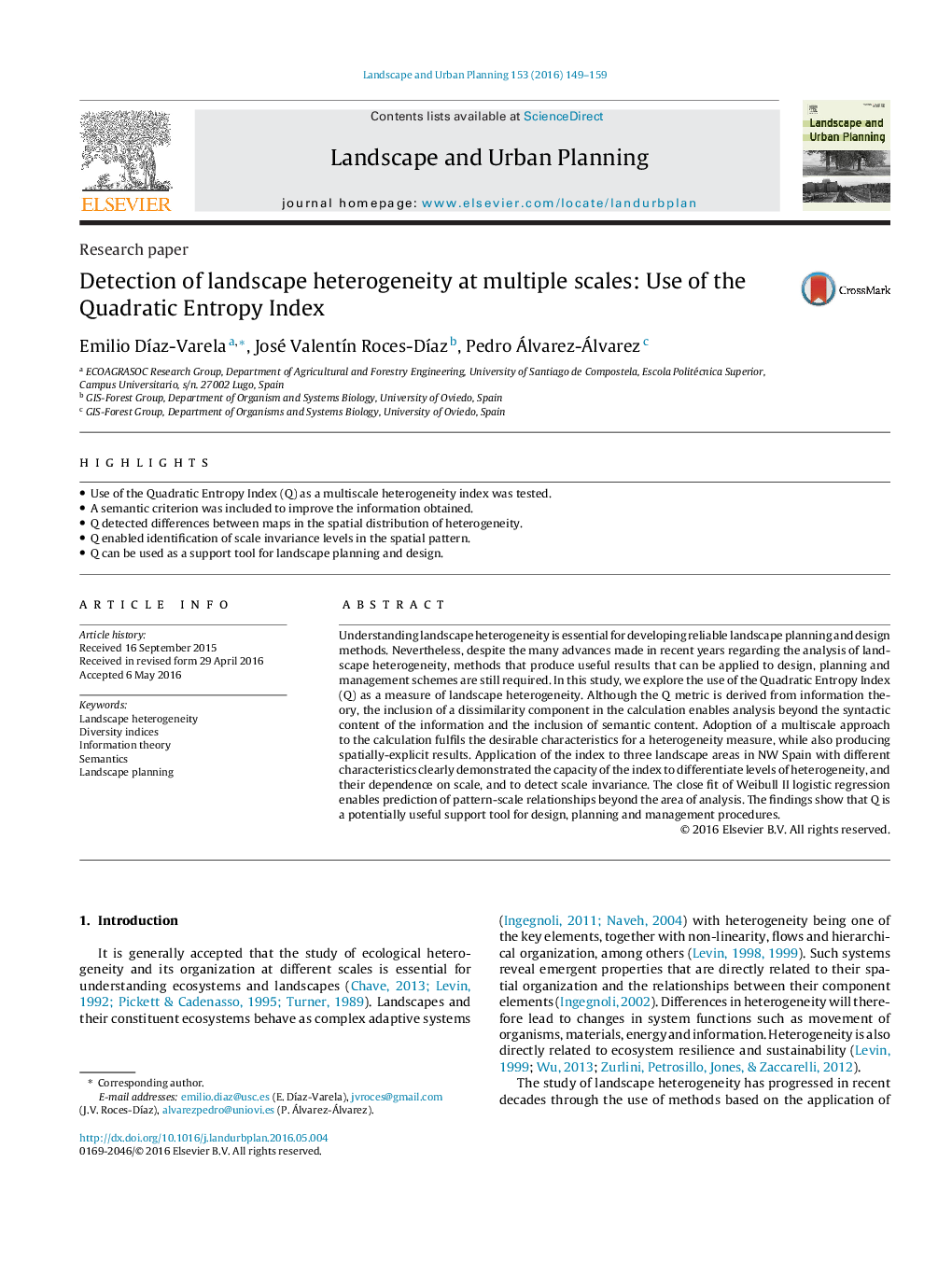| Article ID | Journal | Published Year | Pages | File Type |
|---|---|---|---|---|
| 7460562 | Landscape and Urban Planning | 2016 | 11 Pages |
Abstract
Understanding landscape heterogeneity is essential for developing reliable landscape planning and design methods. Nevertheless, despite the many advances made in recent years regarding the analysis of landscape heterogeneity, methods that produce useful results that can be applied to design, planning and management schemes are still required. In this study, we explore the use of the Quadratic Entropy Index (Q) as a measure of landscape heterogeneity. Although the Q metric is derived from information theory, the inclusion of a dissimilarity component in the calculation enables analysis beyond the syntactic content of the information and the inclusion of semantic content. Adoption of a multiscale approach to the calculation fulfils the desirable characteristics for a heterogeneity measure, while also producing spatially-explicit results. Application of the index to three landscape areas in NW Spain with different characteristics clearly demonstrated the capacity of the index to differentiate levels of heterogeneity, and their dependence on scale, and to detect scale invariance. The close fit of Weibull II logistic regression enables prediction of pattern-scale relationships beyond the area of analysis. The findings show that Q is a potentially useful support tool for design, planning and management procedures.
Related Topics
Life Sciences
Agricultural and Biological Sciences
Ecology, Evolution, Behavior and Systematics
Authors
Emilio DÃaz-Varela, José ValentÃn Roces-DÃaz, Pedro Álvarez-Álvarez,
